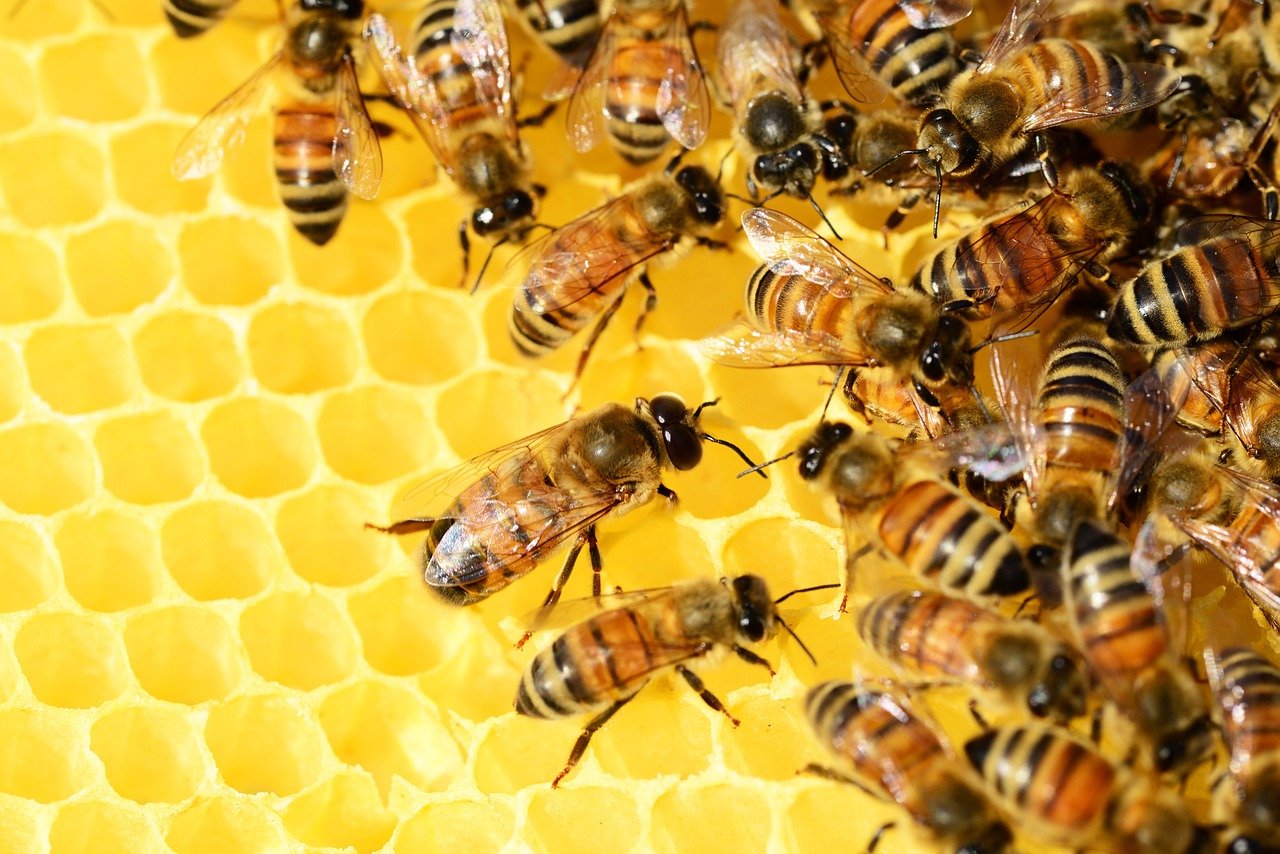Honey bees are more than just creatures who produce delicious honey. These buzzing insects play a vital role in our ecosystem and hold some truly fascinating secrets. Get ready to have your mind blown by these 10 incredible facts about honey bees!
- The Waggle Dance: Honey bees have their own language! This complex dance, called the waggle dance, allows them to communicate the location of food sources to their fellow hive mates. By wagging their bodies and vibrating their wings in a specific way, they relay the direction and distance of the food source – a true feat of bee communication!
- Homing Instinct: Imagine having an internal GPS system! Honey bees possess an extraordinary ability to navigate back to their hive, even after flying several miles away in search of food. They rely on the sun’s position, landmarks, and their amazing memory to find their way home, showcasing their remarkable navigational skills.
- Colony Hierarchy: A honey bee colony is a marvel of social organization. The queen bee reigns supreme, responsible for laying thousands of eggs daily. Worker bees, the tireless workforce, handle everything from building the hive to collecting nectar and pollen. Male drones play a crucial role in reproduction, ensuring the continuation of the bee species. It’s a symphony of nature, with each member fulfilling a vital role.
- Pollination Powerhouse: Honey bees are essential pollinators, playing a critical role in the growth and reproduction of many plants. From fruits and vegetables to nuts and seeds, one-third of the food we consume relies on bee pollination! They are nature’s tiny heroes, ensuring the abundance of our food supply and vibrant wildflowers.
- Short and Sweet Lifespan: Worker bees have a surprisingly short lifespan of just 4-6 weeks during summer. But they work tirelessly during this time, collecting nectar and pollen to ensure the hive’s survival. In contrast, the queen bee lives for several years, her longevity crucial for the colony’s continued success. It’s a fascinating adaptation within the beehive.
- Temperature Tamers: Honey bees are more than just pollinators; they’re also expert climate controllers! When it’s hot, they fan their wings vigorously, creating a cooling breeze for the hive. In winter, they huddle together in a “winter cluster,” generating heat through wing vibration to keep the colony warm. Their ability to regulate temperature ensures survival in all seasons.
- Floral Marathoners: Get this – worker bees can visit up to 5,000 flowers in a single day! They are on a constant mission to collect nectar and pollen, essential for the hive’s survival. Their dedication and tireless work ethic are truly awe-inspiring.
- The Royal Treatment: Royal jelly is a remarkable substance produced by worker bees to feed larvae destined to become queens. This special jelly triggers specific developmental changes, shaping the bee’s future as royalty. It highlights the fascinating social structure within the bee colony.
- Honey: Nature’s Preservative: Honey is not just delicious; it also boasts incredible natural preservative properties. Its low water content and high acidity create an environment where bacteria and other microorganisms struggle to survive. Honey from ancient Egyptian tombs has even been discovered to be edible – a testament to its remarkable ability to preserve itself over time!
- Global Network: Honey bees have become global citizens, establishing their presence on every continent except Antarctica. This showcases their incredible adaptability and resilience. They play a vital role in ecosystems worldwide, ensuring the pollination of countless plants. From delicious honey to their vital role in our environment, honey bees are truly a wonder of nature.
So the next time you see a honey bee buzzing by, remember the amazing secrets it holds. These tiny creatures are essential for a healthy planet, reminding us to appreciate and protect them.



